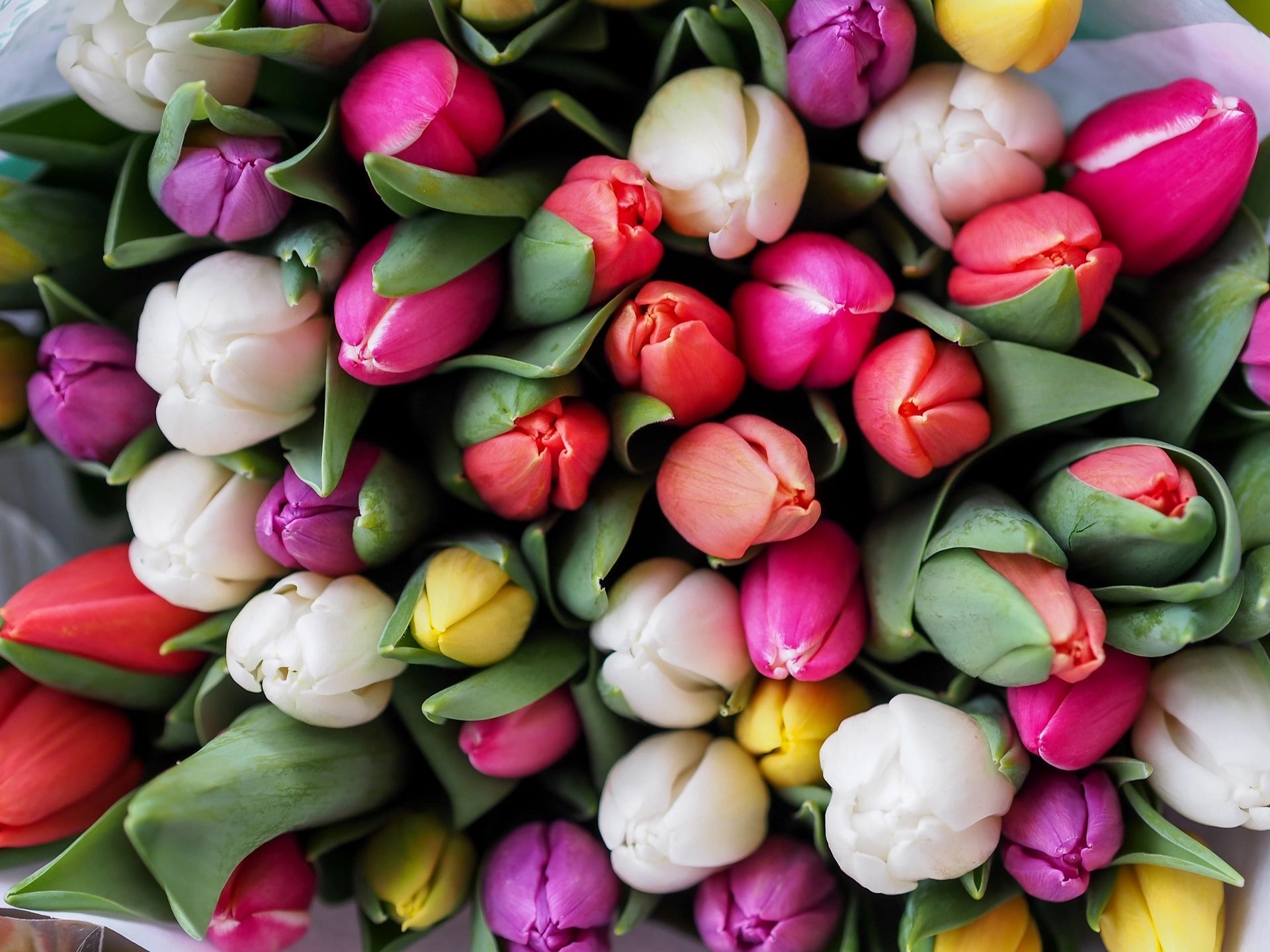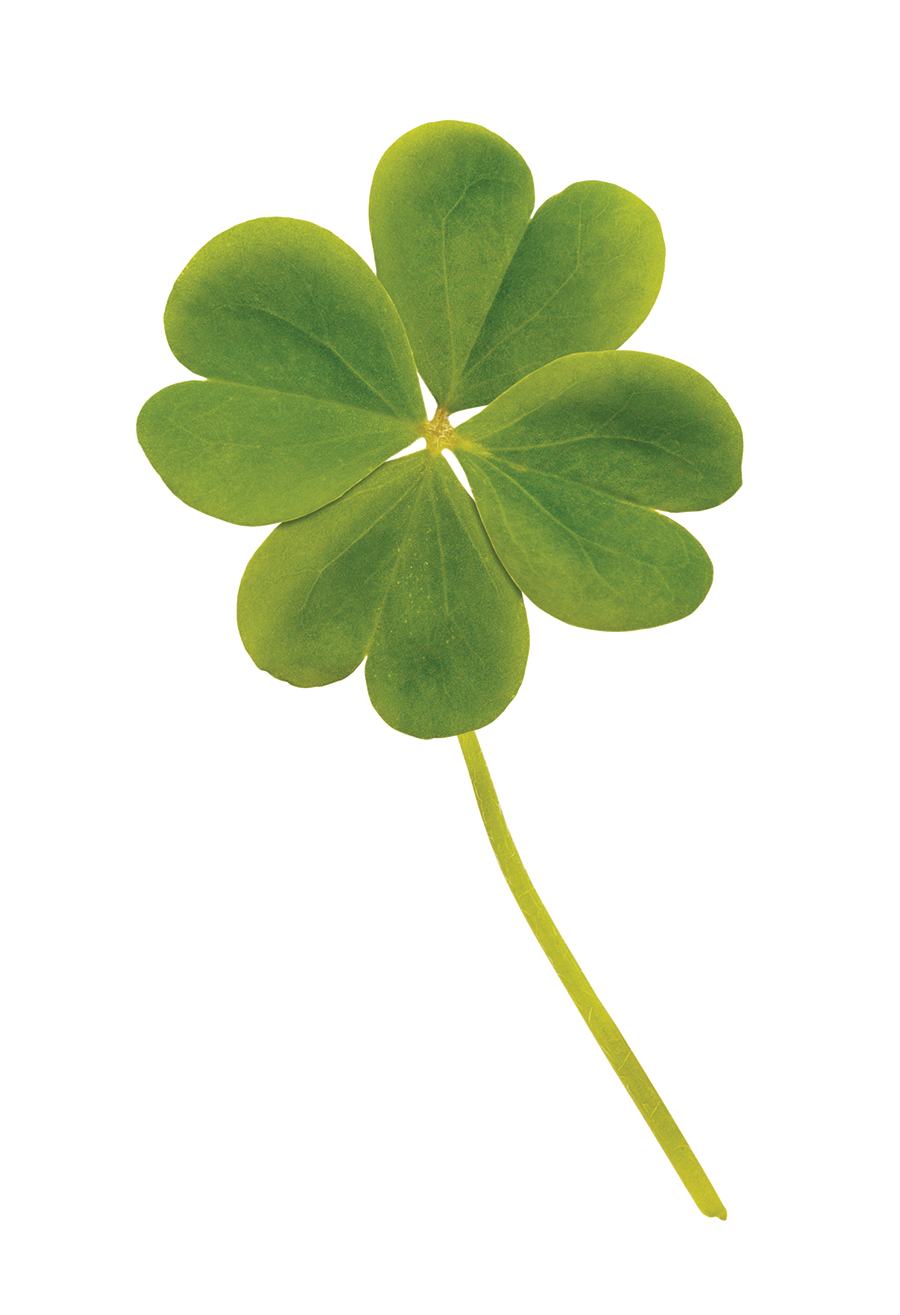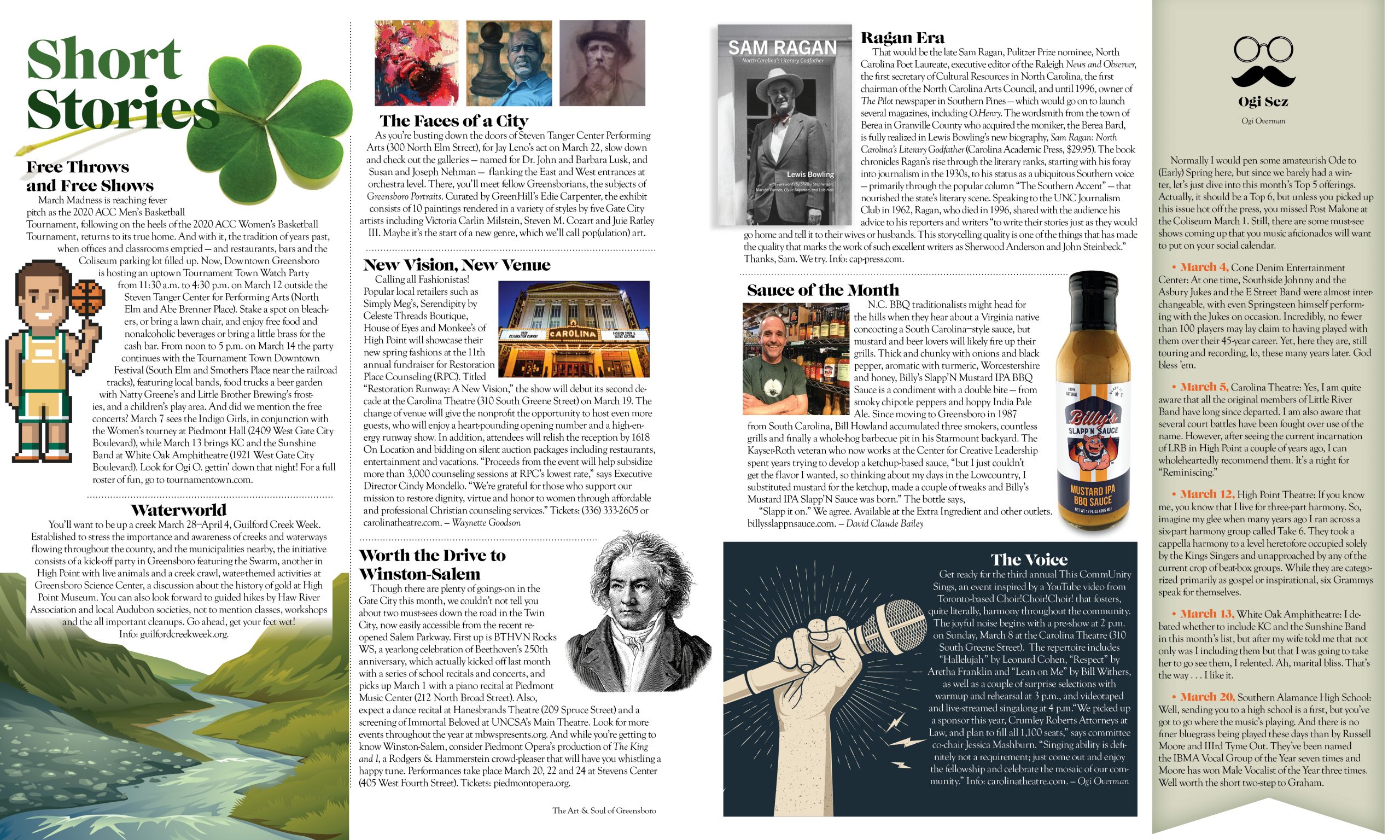Short Stories
***Given the unusual circumstances currently facing all events and their organizations, anyone planning to attend any program, gathering or competition should check in advance to make certain it will happen as scheduled.
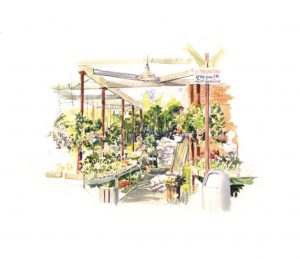
From Sidewalks to Still Lifes
Artist Maggie Fickett took a loving brush to her adopted hometown of Greensboro in the 1980s,’90s and early 2000s. Now, for the first time, the public can see a trove of work that stayed in the Gate City after Fickett, who was suffering from Alzheimer’s, moved back to her home state of Maine in 2014. Maggie Fickett: Living in Plein Air, opens late May at the Center for Visual Artists in the Greensboro Cultural Center (200 North Davie Street). Sweeping in scope, the exhibit and sale includes hundreds of original watercolors, as well as Fickett’s trademark pen-and-ink prints of local landmarks. Gallery goers also will recognize scenes from Jamestown, Burlington, Eden, Elkin, Winston-Salem, Seagrove, Raleigh, Wilmington and Wrightsville Beach, plus Virginia, Maine and Bermuda. The CVA will donate 60 percent of proceeds toward the care of Fickett, who is 89 and living in a memory-care center. greensboroart.org. — Maria Johnson

Life Cycles
The permanent residents of Green Hill Cemetery may be pushing daisies, but everything else in the 51-acre graveyard is coming up roses. Or rather, leafy greenness after this winter’s plentiful rains.
Learn more about clusters of oaks, pines, magnolias and more exotic species on a professionally led botanical tour at 2 p.m. on May 2 (rain date, May 3). If you’re interested in equal parts history and botany “lite,” the semi-annual “Plants and the Planted” Tour, which discusses some of Green Hill’s illustrious occupants, such as Lumsford Richardson and Julian Price will take place on May 9 and 10, at 9 a.m. and 2 p.m., respectively. Tours are $5 per person and start at the southernmost gate on Wharton Street, near Fisher Avenue. Info: friendsofgreenhill.org.
 Worth the Drive to Winston-Salem
Worth the Drive to Winston-Salem
Need to add a little pizzazz to your morning coffee? Consider Mississippian Eric Beavers’ playful mugs painted bright colors and etched with various patterns. Want to commune with nature — without leaving your closet? Perhaps a lovely, eco-printed scarf by Iowan’s Sharlene Bohr is the ticket. While Visual Index, situated in the Twin City’s Arts District (562 Trade Street, NW), emphasizes art fashioned by North Carolina hands, such as charming woodblock prints by Greensboro’s Mary Beth Boone of Purple Pumpkin Press, proprietor Toni Tronu prides herself in selling works by artists in all 50 states. “To my knowledge, I’m the only gallery in the country that can make this claim,” she says. So hop in your Chevrolet and quite literally see the USA . . . just off Salem Parkway. Info: (336) 875-1674 or visualindex.co.
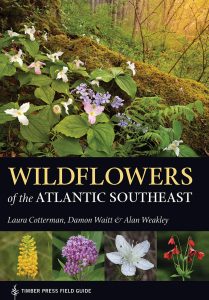 Waitt For It!
Waitt For It!
When researching and writing his field guide, Wildflowers of the Atlantic Southeast, Damon Waitt had a Herculean task: describing and illustrating 1,250 species frequently encountered in this lower quadrant of the United States. Director of the North Carolina Botanical Garden in Chapel Hill and biology prof at UNC, Waitt, as of this writing, is still scheduled to discuss his guide and on April 23 at Paul J. Ciener Botanical Garden (215 South Main Street, Kernersville). To register: (336) 996-7888 or cienerbotanicalgarden.org.
Ogi Sez
by Ogi Overman
April has a lot going for it — flowers blooming, birds chirping, baseballs being tossed — but this year it’s living up to its reputation as “the cruelest month.” With fears of coronavirus raging, cancellations and postponements are multiplying faster than Easter bunnies. Guess I’ll have to wait for Mary Chapin Carpenter and Shawn Colvin to come to the Carolina Theatre . . . whenever. At press time, I was still waiting to hear if Patti LaBelle would grace the Tanger Center — which closed last month before it even opened. Till things are up and running again, there are always virtual concerts. Billboard.com offers up some suggestions, Sirius Xm and the Metropolitan Opera, too. Otherwise, I’ll take a cue from that viral video of quarantined Italians singing from their balconies and give a good yodel from my front porch. Hey, this could be more fun than the ice bucket challenge a few years ago!

